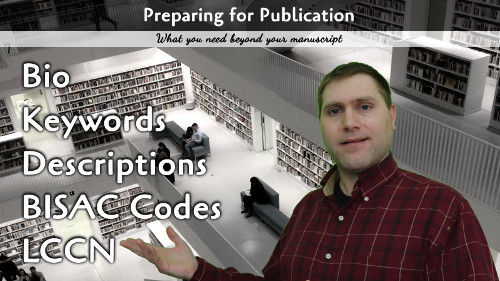Before bringing your book to print, be sure you have the little details taken care of. This article will give you a list of small things you will need to have before bringing your book to print.
Writing a book is more than just getting the words on paper and editing. Sure, you need a book cover and some typesetting, we all know that. Most authors are being easily convinced of the need for eBooks and Audiobooks, but what about the fine details that sometimes get overlooked, and then hastily put together at the last minute? This article will help you to create a checklist of small details you need when you are completing your book and preparing for publication.
Getting Your Numbers
We have already talked a lot of ISBN's. You will need an ISBN for your book cover unless you are opting to use a Free ISBN from your printer. I generally recommend purchasing your ISBN even if you could be assigned a free one, but that is up to you.
The other number you might consider is the LCCN (Library of Congress Control Number). These are free, and generally recommended for books printed in the United States, though they are not technically required. You can sign up on the Library of Congress website for your access to their automated system. Make sure you send them a copy of your book once it is published. They will provide you with instructions when your LCCN is assigned.
Meta Data
The various data that is used by book distributors needs assembling. This will take time, so schedule a day to make sure everything is correct before trying to submit your book. Some of this is also required when assigning the ISBN, so work on this in the mid-stages of the manuscript:
- Keywords: Better though of as 'key phrases' as single words do not generally help. Your phrases should be relevant, and many tools exist to help you determine your keywords and phrases.
- Short Description: This is generally around 350 words. It should not tell the details of the story, but get someone interested and curious enough to want to read the story. This is the most commonly used description, so put the most effort into this one.
- Long Description: This is designed to provide a few more details about the book to curious readers. If you have a good short description, many people will not even bother to read this, but it should contain more information without giving away key parts of the story.
- BISAC Codes: These are the codes where your book will be listed. You will need to know your BISACs to assign your ISBN and to list your book on multi listing services. Some services allow two and others three, so plan on three. The full list and details are here.
- Author Bio: The bio is important to tell people more about who you are. It makes a personal connection and in the case of non-fiction, lets your audience know about your expertise in the field. You need the bio for your ISBN, LCCN, and to list the book. On Amazon, your bio is not setup in KDP, but on Author Central, which gets linked to your published books.
And More
Finally, you need a place to call home online. Do not rely on social media services for your book's information. If you have an author website, set up a page for each book. If you do not have a specific website for yourself, at least purchase a domain name and create a landing page for the book.
If you have all these items in place, you are ready to list your book on the various services that will tell people where to find your work.


